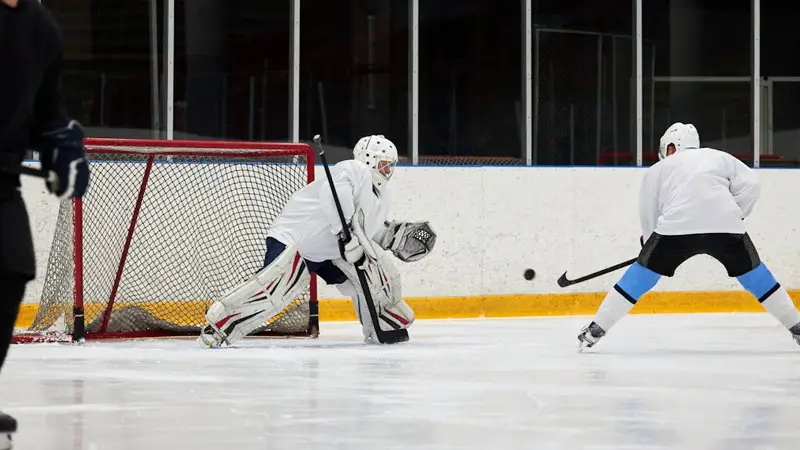Hockey, a sport renowned for its speed and physicality, often leaves fans bewildered by its complex rules. Among the most common queries is the possibility of a 5-on-2 scenario, a situation seemingly ripe with scoring opportunities.
This comprehensive guide aims to demystify this aspect of the game, ensuring you grasp the intricacies of penalties and player numbers on the ice.
Unraveling the 5-on-2 Misconception
Contrary to popular belief, a true 5-on-2 situation never occurs in hockey. The rules explicitly state that a team must always have at least three players on the ice, excluding the goalie. This rule ensures fair play and prevents an excessively advantageous power play.
What Happens When a Team Incurs a Penalty While Short-Handed?
When a team with only three players on the ice commits a penalty, the penalized player is sent to the penalty box, but a substitute player from the bench takes their place. Instead of immediately serving the penalty, it becomes a “delayed penalization”, commencing after the shortest existing penalty expires.
Illustrating the Concept: A Hypothetical Scenario
Imagine the 1986 Edmonton Oilers on the ice.
Scenario
Wayne Gretzky incurs a 2-minute minor penalty at the 10:00 mark, leaving the Oilers with 4 players on the ice (5-on-4 power play for the opposing team).
Subsequent Penalty
Mark Messier takes another 2-minute minor at the 10:30 mark, resulting in a 5-on-3 power play.
Delayed Penalization
Paul Coffey receives a penalty at 11:00. Instead of reducing the Oilers to two skaters, a substitute (Kevin Lowe) takes Coffey’s place. Coffey’s penalty begins when Gretzky’s ends at 12:00.
Penalty Ablauf
At 12:00, Gretzky remains in the penalty box until a stoppage in play, but the Oilers still face a 5-on-3 disadvantage. Messier’s penalty ends at 12:30, allowing him back on the ice, leading to a 5-on-4 situation. Gretzky rejoins play after the next whistle.
Overtime Considerations
The overtime format in the NHL features 3-on-3 play. A penalty in overtime does not lead to a 3-on-2 situation. Instead, play is stopped, and the power play begins with a 4-on-3 advantage. An additional penalty would then result in a 5-on-3 power play.
Frequently Asked Questions (FAQs)
Can a team ever have fewer than three players on the ice?
No, the rules mandate a minimum of three skaters (excluding the goalie) on the ice at all times.
What happens if a team takes multiple penalties in quick succession?
Penalties are served sequentially, with delayed penalizations ensuring that a team never has fewer than three skaters.
Are the rules regarding penalties different in overtime?
In overtime, penalties still result in power plays, but the starting point is 4-on-3 instead of 5-on-4.
Conclusion
A 5-on-2 scenario in hockey is a myth. The rules ensure a minimum of three players on the ice for each team, promoting fairness and preventing an insurmountable disadvantage.
Delayed penalizations ensure teams are still held accountable for infractions while maintaining balanced gameplay.
Understanding these rules enhances your appreciation for the strategic complexities of this thrilling sport.





James Felix